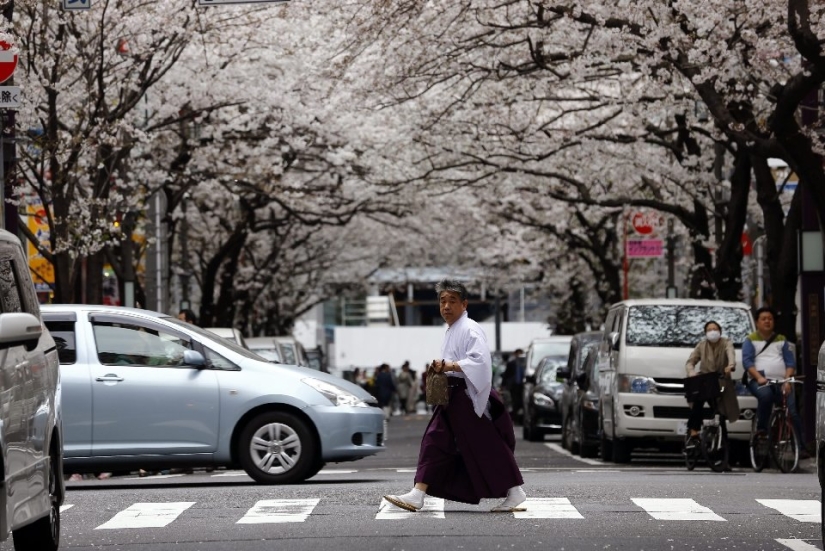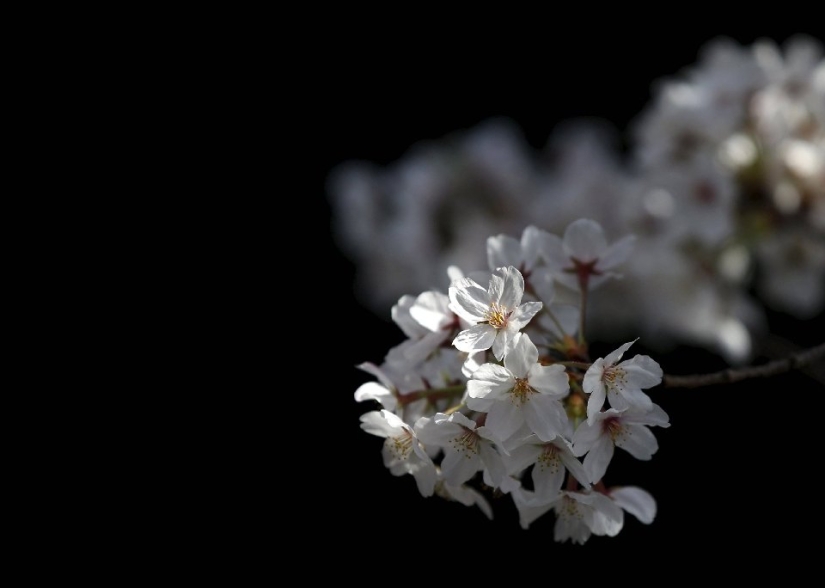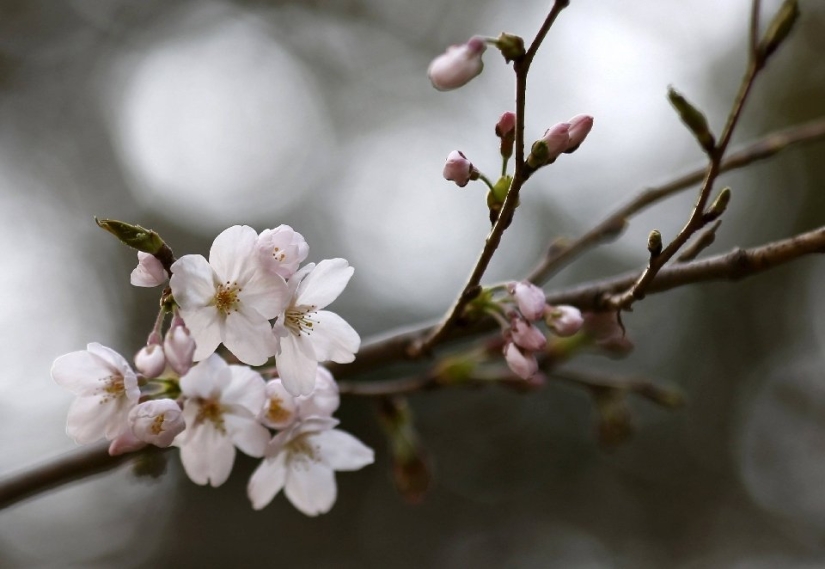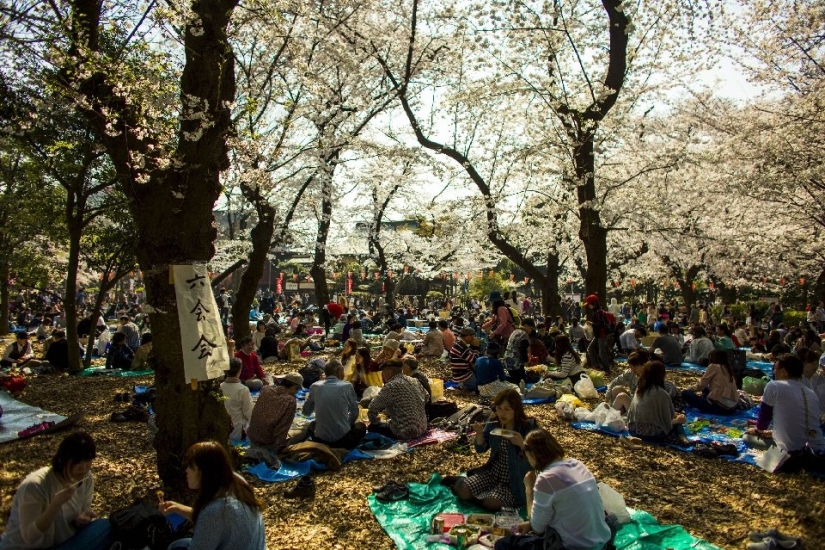Hanami is a Japanese tradition of admiring cherry blossoms
The tradition of admiring cherry blossoms dates back to the XVI century. Thousands of Japanese people come to parks every year, sit under cherry blossoms and admire pink flowers. Enjoy the extraordinary beauty of cherry blossoms with us!


1. Since Monday, Ueno Park in Tokyo is filled with crowds of satisfied Japanese. As every year, they came to admire the cherry blossoms — the national symbol of the country. (Photo: TORU HANAI / REUTERS)

2. Families, friends and classmates sit in parks under flowering trees, spread tablecloths, take out the food they brought with them and celebrate the spring festival until nightfall, enjoying the beauty of cherry blossoms. And in the evening, according to tradition, paper lanterns will be lit in the parks. (Photo: TORU HANAI / REUTERS)

3. For several days, the Japanese will be watching sakura-zensen — the "cherry blossom front" — from a TV show that is shown immediately after the weather forecast. (Photo: AP Photo / Eugene Hoshiko)

4. Sakura-zensen begins in February on the southernmost island — Okinawa. (Photo by THOMAS PETER / REUTERS)

5. In Tokyo and Kyoto, cherry blossoms begin later — in late March or early April. (Photo: AP Photo / Shizuo Kambayashi)

6. The most recent cherries will bloom in the north of Japan — on the island of Hokkaido. (Photo by THOMAS PETER / REUTERS)

7. This year, the tradition of the khans was supplemented by another custom — to take selfies against the background of flowering trees. (Photo by THOMAS PETER / REUTERS)

8. Hanami is an important part of Japanese identity. The budding buds sung by poets mean a new beginning, and literally, because when the cherries bloom, a new academic year begins, as well as a new working year in Japanese corporations. (Photo: AP Photo / Shizuo Kambayashi)

9. The symbol of Japan, the cherry blossom, can be found almost everywhere in this country — on kimonos, dishes, jewelry and even on stationery. (Photo: TORU HANAI / REUTERS)

10. Without this tradition, Japan would not be Japan, a 67-year-old Tokyo resident told a Reuters reporter. (Photo: AP Photo / Shizuo Kambayashi)

11. "This is an event that every Japanese person has been participating in since they were very young," Miko Nakai said. (Photo: TORU HANAI / REUTERS)

12. The cherry blossom, which lasts two weeks, is covered in detail in the Japanese media. (Photo by YUYA SHINO / REUTERS)

13. The peak of flowering comes around the 7th day, then the cherry blossoms gradually begin to fade. (Photo: TORU HANAI / REUTERS)

14. The Mayor of Tokyo believes that two million people will visit Ueno Park this year alone. (Photo: TORU HANAI / REUTERS)

15. The Tokyo authorities have made sure that visitors to the parks do not leave behind garbage, for this they distribute picnic baskets and garbage bags to everyone. (Photo: TORU HANAI / REUTERS)

16. At this time of year, in addition to parks, the Japanese also visit temples and shrines, around which cherry blossoms also bloom. (Photo: AP Photo / Shizuo Kambayashi)

17. Hanami is a Japanese tradition of admiring cherry blossoms. (Photo: TORU HANAI / REUTERS)

18. Picnic under cherry blossoms in Ueno Park in Tokyo. (Photo by THOMAS PETER / REUTERS)

19. Hanami in Tokyo. (Photo: AP Photo / Shuji Kajiyama)

20. Cherry blossoms are the national symbol of Japan. (Photo: AP Photo / Eugene Hoshiko)
Recent articles

Jacques-Henri Lartigue (1894-1986) is perhaps the most famous "amateur" in the history of photography. The art world discovered his ...

It turns out that an active lifestyle is useful not only for the body but for the brain. Exercise strengthens muscles and spirit, ...

Most major companies profanity is not encouraged. It is considered that the profanity — it is a sign of disrespect for ...